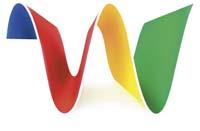Google Wave: The wave that will take the email ahead?

There is a communication and collaboration tool on the Internet that we all use, is email. But this tool was invented more than forty years ago, with the technology that existed then, and with the current one can (and are done) do much more advanced things. That's what Google has done: mixing email, wikis, instant messaging, etc., creating Google Wave, the email of the future.
Email basically consists of sending a text message to one or more recipients, making copies of it for each recipient, and the life of the message ends when the message reaches the destination. Subsequently, the conversations are generated by responding to the messages and copying the parts of the previous messages in the responses. But many times it is not easy to follow the thread of conversations in the chaos of messages.
In the system created by Google, on the contrary, the initial user creates wave or conversation and shares it with several people. Only one copy of this wave is saved on the server, on which all participants interact to create the conversation. Participants can, on the one hand, modify the own text of the wave to form a text consensual among all, as a wiki or a shared document; on the other, add answers or comments at any point of the wave, as can be done in the email, in the debate pages of the wikis or in the forums.
In addition, if during the change or comment of the wave some member of the conversation is open to another one, this one can see directly the changes, as in the instant messaging or in the chat programs. In addition, changes and comments can be made simultaneously by several. And, as with the wikis, all the change history is saved, to go back at any time or see the entire change process. The tool has other small details. For example, from a point of the response tree, the group of participants can be restricted to view or modify the rest only those selected.
Google Wave, of course, needs a program server, but its program in favor of the client works in the browser without Flash or RIA interpreters, ie with standard techniques like HTML, Javascript, AJAX, CSS, etc. And it is certainly incredible the degree of interaction they have achieved only with them.
API Add functionalities
In addition to intrinsic features, Google Wave can have many more, as it includes API (Application Programming Interface) so that third parties can add new features through extensions. At the moment, since it is not a public tool, only Google has developed extensions for Google Waver. But those who have done are very spectacular and serve to see the full capacity of the tool. For example, they have made an extension that corrects spelling or grammatical errors as they write; or an extension that automatically translates to the default language of each recipient as they write the text. Or it is written in Google Wave and another to publish the answers directly on a blog or on a social network. Or images, videos, maps, etc... In the future, with the contributions of people, you can have thousands more options, today unimaginable.

Open source protocol and code
He is not the first to call himself a substitute for Google Wave email. In recent years there have been numerous communication tools (instant messaging, social networks...) that, despite their success, have not had as much diffusion as email.
One of the main reasons is that all these tools are services associated with specific companies, with closed protocols and owners. To use these tools you must open the account in that of the owner company and accept that they are the ones who keep the information. This is a major obstacle to the dissemination of these tools, especially at the business level. In addition, similar services are offered by several companies and customers of one cannot communicate with others like Facebook or Tuenti or Messenger or Google Talk. Email is an open protocol that allows, in addition to client-server communication, communication between servers. In this way, anyone can send an email to anyone, regardless of where the account is.
Because Google has used the same philosophy with Google Wave. An open protocol has been developed that includes communication between the servers. But they have also opened the server and client source codes implemented by them. Therefore, any company can create its own WAVE server or install the Google server for internal use or as a WAVE provider, and individuals can open their accounts on one or another WAVE provider. And everyone can communicate with each other.
Google Wave is a powerful communication tool with opening features that have allowed the success of email to date. It meets all the technical requirements to replace email, but it's about to see if it's going to do so, because we know that many other factors are involved in these issues… I, at least, hope that everyone, seeing the power of the tool, will soon go over the wave.






